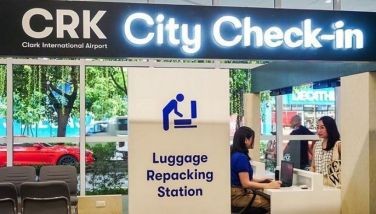Government crafting another economic stimulus, rehab plan
MANILA, Philippines — The government is crafting another economic stimulus package and a rehabilitation plan to soften the damage caused by the coronavirus disease 2019 or COVID-19 to the economy, according to the Department of Finance (DOF).
In a statement, Finance Secretary Carlos Dominguez said the government is crafting a new stimulus package to counteract the economic disruption from the pandemic.
“NEDA estimates indicate that the economy may shrink by 0.6 percent if no intervention is done. However, gross domestic product growth can still reach 4.3 percent if the global health crisis is resolved in three months’ time and we are able to provide a decisive stimulus,” Dominguez said.
“This planned stimulus package is already being crafted and will be responsive to the uncertainties of the situation,” he said. “At this point, nobody knows how bad this pandemic will get or how long it will last.”
According to Dominguez, the government will “do what is necessary” to help the country overcome this crisis, which means it will need to increase its spending.
He said this “will definitely make us exceed our previously estimated 3.6 percent deficit threshold.”
“Thus, we appeal to taxpayers who are able to file and pay their taxes early to do so, despite the one-month extension, so that we can fund these programs with the least amount of borrowing,” he said, referring to the one-month extension given by the Bureau of Internal Revenue (BIR) for the filing and payment of income tax returns.
Earlier, the finance chief said the Philippines’ deficit level may breach four percent of gross domestic product (GDP) this year, higher than the initial estimate of 3.6 percent.
He said COVID-19 is seen to cut revenues by as much as P286.4 billion if economic growth settles at zero percent this year. If the economy contracts by one percent, the drop in revenues would reach P318.9 billion.
The finance chief said that while it would be challenging to manage the financing gap that would result from the health emergency, the country is now “in a relatively better position” than it was in during the 1997 Asian financial crisis, when the Philippines found it hard to access financing for its programs.
“A large part of our strength is because of the Comprehensive Tax Reform Program (CTRP) which allowed us to raise advance additional revenues worth almost P200 billion in 2018 and 2019. We are now using such resources to protect the economy against risks such as COVID-19,” Dominguez said.
He said the the Philippines is also in talks with the World Bank and the Asian Development Bank (ADB) for concessional financing of up to $2 billion.
So far, the government has received a grant of $3 million from the ADB and a loan facility of $100 million from the World Bank. The ADB also recently approved a $5 million grant for the distribution of food items to poor households in Luzon.
Earlier, the government’s Economic Development Cluster (EDC) unveiled a P27.1 billion program to help frontliners fight the contagion and provide economic relief to sectors affected by the spread of the disease.
President Duterte also announced the allocation of P200 billion for the provision of emergency subsidies to 18 million low-income household that have lost their sources of income.
“The P200-billion program for distribution in cash and basic needs over the next two months is the largest direct financial assistance program granted by the government to Filipino families in our country’s history,” Dominguez said.
Dominguez said that upon a review on the country’s financial position, the DOF identified that this spending requirement can be made available quickly through various sources.
- Latest
- Trending






















